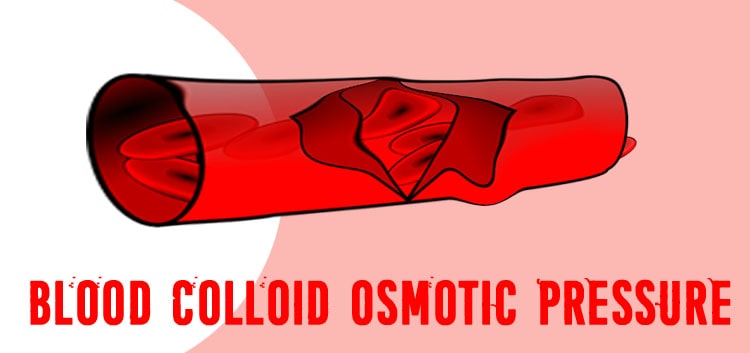Colloidal osmotic pressure is a type of osmotic pressure served by proteins, especially albumin. Plasma has a “colloidal osmotic pressure” in the blood vessels.
In addition, the “total colloidal osmotic pressure” with the osmotic pressure in the blood usually tends to remove water.
Pull into the circulatory system, which is the mechanical operating mechanism of colloidal osmotic pressure.
Microvascular filtration pressure and interstitial colloid osmotic pressure are an energy contrast. In this article, you can learn more about blood colloid osmotic pressure.
What is the normal colloid osmotic pressure?
Water molecules pass through semipermeable membranes in low-density solutions with different concentration solutions.
The solution will also enter towards higher density under the drive of osmotic pressure difference on both sides. This phenomenon is called osmosis (osmosis).
So what is the normal colloid osmotic pressure? The solution’s osmotic pressure depends on the number of dissolved particles per unit volume of the solution. It has nothing to do with solvent type and particle size.
Also, 80% of it comes from Na * and CI-. Plasma colloid osmotic pressure (colloid osmotic pressure) consists mainly of protein molecules.
Plasma albumin has a small molecular weight and a large number. It determines the size of the plasma colloid osmotic pressure.
What is the meaning of oncotic pressure?

What is the meaning of oncotic pressure
The oncotic pressure is osmotic pressure. It pulls water towards the protein. Also, when there is a lack of protein in the blood, the water leaks from the vessel into the surrounding tissue.
So it will be possible to compensate for the reduction in the amount of oncotic pressure.
This reduction results in edema, which is one of the symptoms of nephrotic syndrome. This oncotic pressure helps the body move water.
So hydration contributes in a very important way to the maintenance of the body.
What is colloid osmotic pressure quizlet?
However, what is blood colloid osmotic pressure? Colloid osmotic pressure (KOD) (oncotic pressure) is a part of osmotic pressure. This is due to the colloids of a solution.
Such as in human body fluids. Blood plasma, colloid osmotic pressure, mainly comes from proteins like albumin or globulin. It is essential for maintaining plasma volume.
So, since humans’ vascular wall is usually very easily accessible to small molecular plasma components. As a result, the difference in osmotic pressure is almost always balanced.
The endothelium is individually accessible to colloids. So pressure builds up in the blood vessels in the blood vessels. It is external to the natural hydrostatic pressure concentration.
What is an example of osmotic pressure?
Osmosis refers to the passage of water through scattering in a so-called semipermeable membrane. The semipermeable membrane only allows small enough molecules to pass through such water.
Water also removes density differences between different sides of the semipermeable membrane. Moves to the membrane where the amount of water is less.
In addition, the concentration (concentration) of substances dissolved in water is higher.
A practical example of osmosis is the use of blood volume expanders, i.e., plasma expanders. Polymeric substances such as a protein called serum albumin or a polysaccharide are added to the bloodstream.
These substances then bind to water, causing blood to accumulate in the surrounding tissues. It also increases the total amount of blood.
What is the cause of osmotic pressure?
Throughout the body, dissolved compounds need to have an osmotic pressure. Large amounts of plasma proteins cannot easily pass through the walls of the microvascular system.
Also, the tissue cannot enter the fluid. Caused by colloidal osmotic pressure inside the “capillary” (capillary) (endothelium).
Also, which will offset a certain amount of “liquid.” The capillary protrusion, In other words, the oncotic pressure “pulls” the fluid in reverse.
In certain pathological conditions such as “plasma protein” decreases. Urinary excess protein leakage (proteinuria) (such as pathological causes such as renal insufficiency) or malnutrition.
This reduces colloidal osmotic pressure, fluid in the tissues; This process is called “edema.”
Conclusion
Osmosis is a common occurrence in nature. It is very important for the human body to maintain normal physiological functions.
I hope you have a complete idea about blood colloid osmotic pressure.
We talk about more Blood
The Blood will Never Lose its Power, From Which Structures do Oxygen Molecules Move from the Lungs to the Blood?, How Does Inflating a Blood Pressure Cuff Affect Brachial Artery Blood Flow?, This Diagram Shows How the Body Keeps Blood Glucose at a Normal Level

